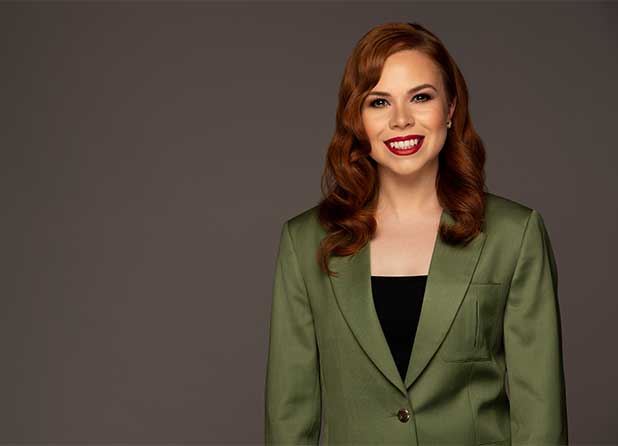
Branding has long been the territory of marketers, but social media platforms have forever changed the way we operate. Traditionally, it was enough for businesses like Apple, Nike, Coke, Virgin, and Tesla, among others, to reach out to an audience with a consistent market tone, messaging, voice, and persona. Signature slogans like Apple’s “Think Different” or Nike’s “Just Do It” were universally recognized rallying cries that told a story and influenced millions with only a handful of words.
OOH! Campaign Breakfast Briefings are back! Join us to discuss all things Out-Of-Home – live and in-person. But register now. Tickets are limited. Click here for more details.
While this branding model still holds, it’s the baseline upon which more active, savvy and ‘woke’ brands are building themselves in a world (and the internet) that’s inundated with information. Today, corporate and individual branding is moving away from old-fashioned print and broadcast to tell visual and verbal stories across Facebook, Instagram, Twitter, YouTube, LinkedIn, and many other platforms instead. They’re talking to wider audiences, using online and offline narratives to reflect positively on themselves and their organizations. And when customers, clients, and the wider industry like what a brand is saying, they endorse it by buying into its narrative through sales and continued loyalty.
And yet, so many still wonder if we really need personal branding. Let me break it down for you.
Personal branding is more than a buzzword
Ask yourself this: “Is it brand building, or smoke and mirrors?”
The world is more connected and informed than ever before, with internet vigilantes waiting, whistle in hand, to blow long and hard. It’s not enough for businesses, corporations, and their representatives to simply “sell” products and services. In addition to quality, they need a set of values and market positioning that takes a stand and a view of the bigger picture.
That’s the gap personal branding fills. It’s the bridge that highlights your strengths, establishes a reputation, and builds trust to repeatedly communicate a unique set of personal and corporate attributes. It’s consistent hard work, and it’s not easy. But it keeps you on point, on-trend, and top of mind.
Stand out from the crowd
The internet is all about visibility. Anyone can get lost between search algorithms, popularity indices, intrigue, and good old propaganda. While every corporation and person has woken up to the memo that CSR and ESG mandates are half the game in professional communication, most still don’t know how to work the system.
That’s where personal branding can help someone use their value positioning to increase brand visibility and perception. I keep going back to Elon Musk and Richard Branson as examples because they both get it. Their personal brand positioning, combined with their corporate mandates, has made them contemporary global powerhouses. People don’t just buy their products; they buy a piece of their story.
Don’t just influence; be an influencer
Here’s another truth: social platforms are a numbers game. It’s not enough to have a voice, a point of influence, and a presence that is distinctively your own. You also need to have it heard by a sizeable number of people.
So, how do we do that? Start by figuring out who you are and what you represent. Stay true to your personal and professional identity and decide what you want to be known for. Lead through value addition and thought leadership, and keep a finger on the pulse of your industry. Most importantly, leave your ego at the door. When everyone is vying for their 15 seconds of internet fame, it’s easy to lose track of the end goal. Remember (over) confidence is not competence and not all influencers influence.
Use the right podium
With (almost) universal internet access at everyone’s fingertips, remember that not all influencers are created equal. Anyone can (and far too many do) leverage social media platforms (without regard to reputations) to operate. What you post and where you post is of paramount importance. To survive and be heard across a cacophony of digital noise, you need to first get your online brand and medium of conversation in order. With so many different platforms available, your online presence will look different depending on the channels you employ. While your story should be consistent across all your boards, you should express more casual or reserved versions of yourself across different platforms.
And that’s where the professionals come in. They know what works where. LinkedIn is the gateway to more serious hobnobbing and thought leadership. It builds a brand reputation through industry-related thoughts, blog articles, and commentary. Podcasting creates a more intimate listenership and following. Zoom, Hangouts, and MS Team meetings are the new conferencing and networking ground, and Instagram and Facebook are the platforms to showcase the more intimate and relaxed versions of your brand.
It’s an ever-evolving game
Like no person is destined to remain the same forever, personal brands evolve to reflect where you are in your journey. As digital ecosystems change, you need to be visible and actively communicating on your different audiences’ platforms… without becoming a sell-out at any point. Remember that people have a sixth sense for inauthentic behaviour and personal branding works best when you’re true to yourself and your values.
To borrow Oscar Wilde’s wise words, “Be yourself because everyone else is taken” – that’s the key to personal branding done right!









